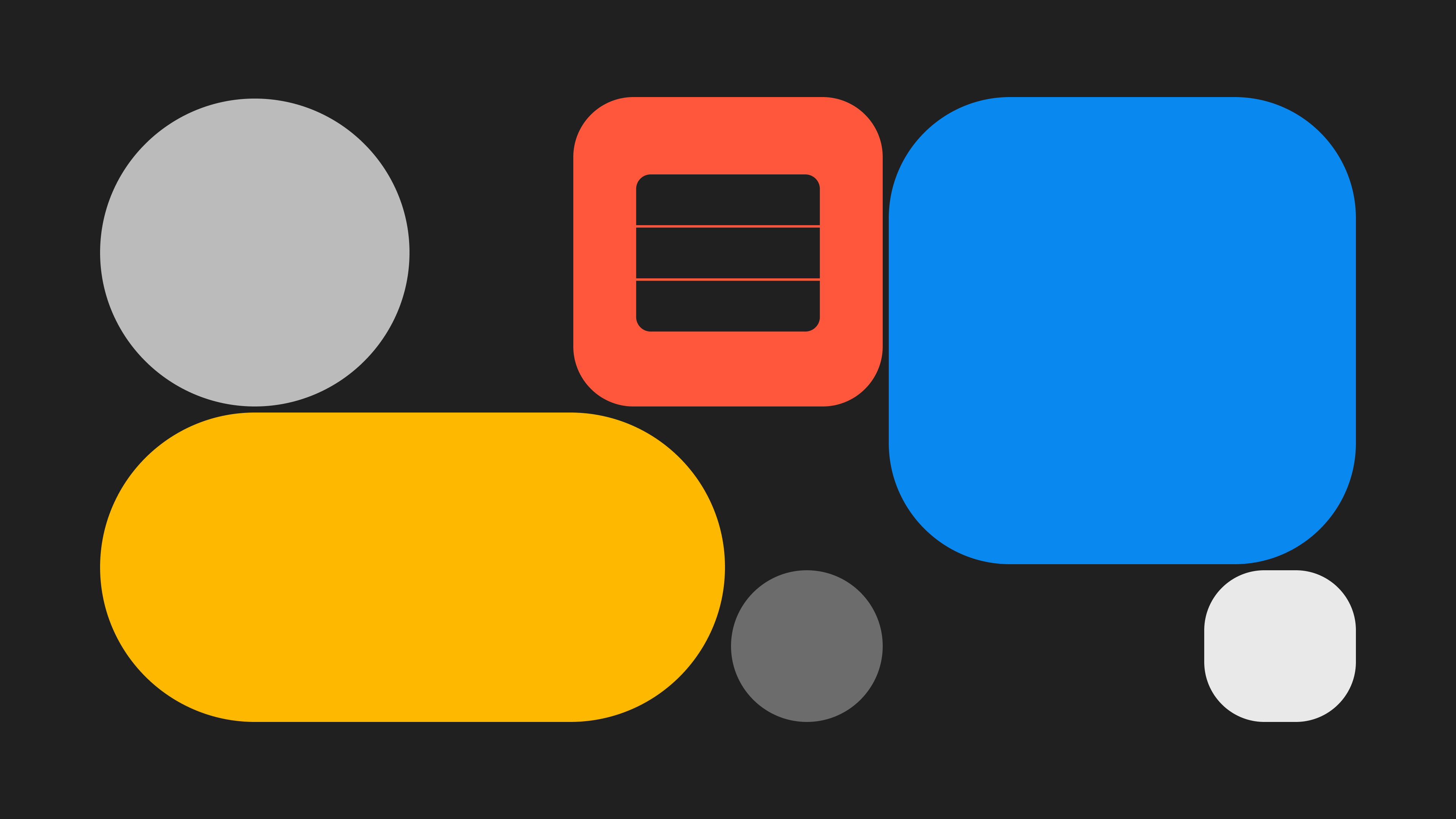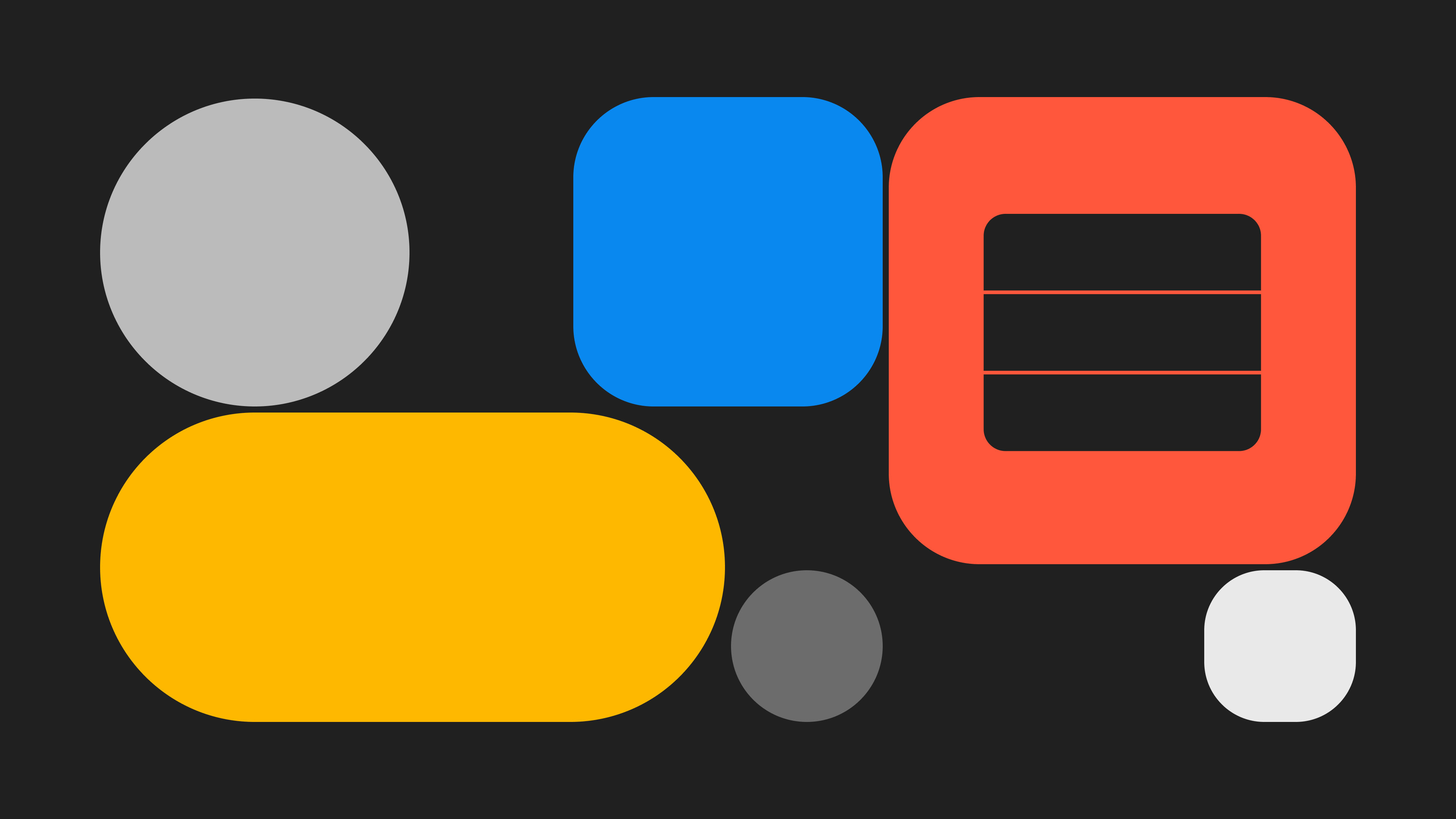Three flavors of gas abstraction users will experience in 2025
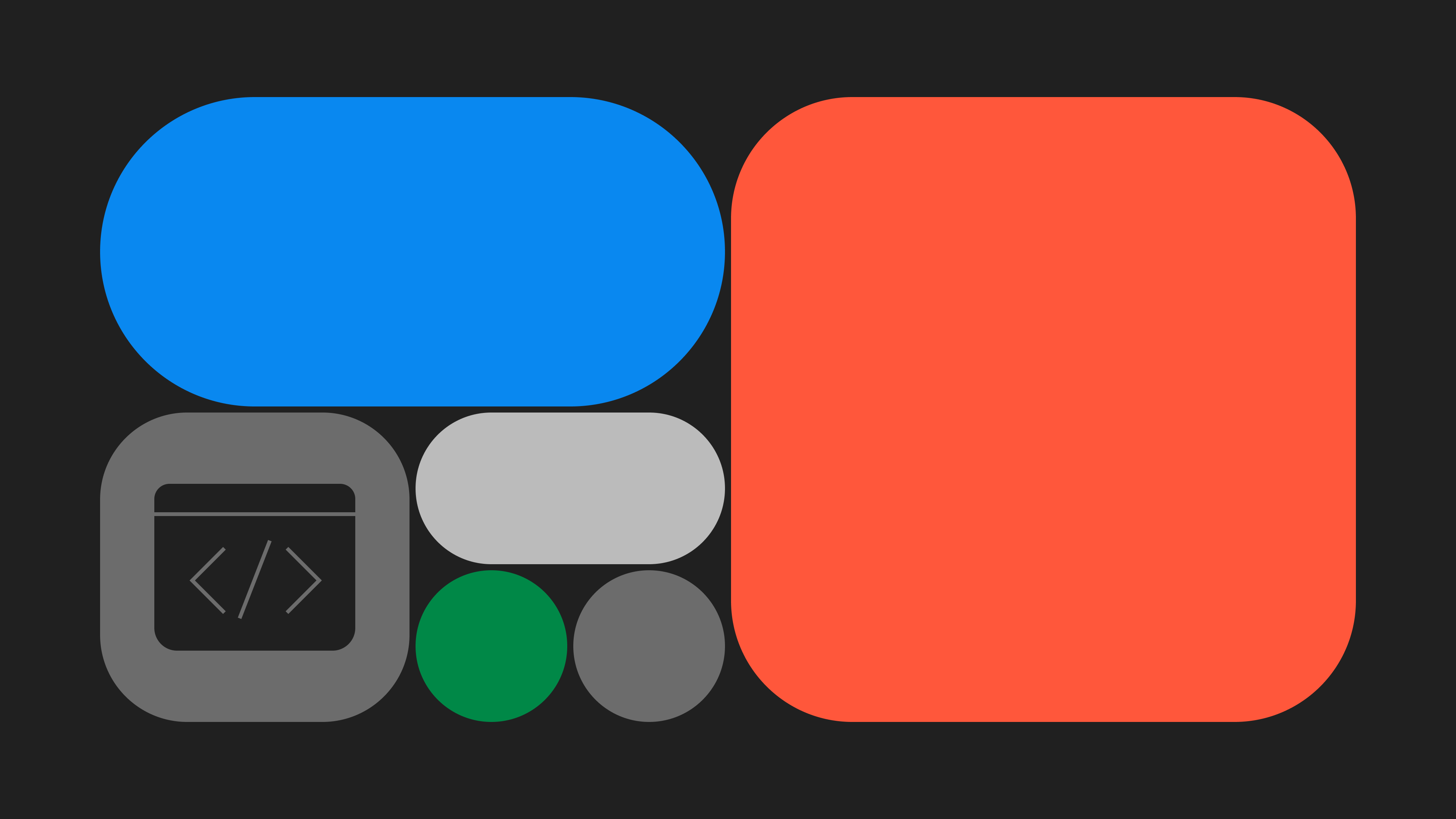
Blockchains rely on gas fees as a critical component of their operation. These fees are required to execute transactions on the network and serve two key purposes: compensating validators who maintain the network’s security and functionality and acting as a deterrent to network congestion or denial-of-service attacks. Essentially, gas fees ensure the network remains both secure and operational under varying levels of demand.
In the early days of web3, high gas fees on Ethereum presented one of the most significant UX challenges. For users, the cost of interacting with decentralized applications or transferring assets often outweighed the benefits, particularly during times of network congestion when fees could spike dramatically. This issue sparked the rise of so-called “Ethereum Killers,” such as Solana and Polygon, which offered faster transaction speeds and significantly lower fees. These networks successfully alleviated the pain point of expensive gas fees, making blockchain technology more accessible to a wider audience.
However, the emergence of these alternative networks has introduced a new set of challenges. As users increasingly interact with multiple blockchains, they now need to maintain native gas tokens for each network they use. For example, a user transacting with an ERC20 on Ethereum also needs ETH, while the same user on Solana requires SOL, and on Polygon, they need MATIC/POL. This fragmented experience adds complexity and friction, creating one of the most pressing UX problems in web3 today.
The challenge lies in enabling users to seamlessly interact across multiple networks without requiring them to hold and manage an array of native gas tokens. This is where gas abstraction enters the conversation, promising to unify and simplify the blockchain experience by abstracting away the complexities of gas fees and multi-network interactions.
Gas Abstraction will be essential for wallets by 2025
By the end of 2025, gas abstraction is expected to become a fundamental feature for blockchain wallets, marking a significant milestone in enhancing web3 usability. The foundation for this shift has been laid by advancements in EVM “Account Abstraction”, particularly through ERC-4337, which enables features like sponsored transactions (paid for by apps or wallets) and the ability for users to cover gas fees using any ERC20 token, rather than being limited to the native gas token of the network.
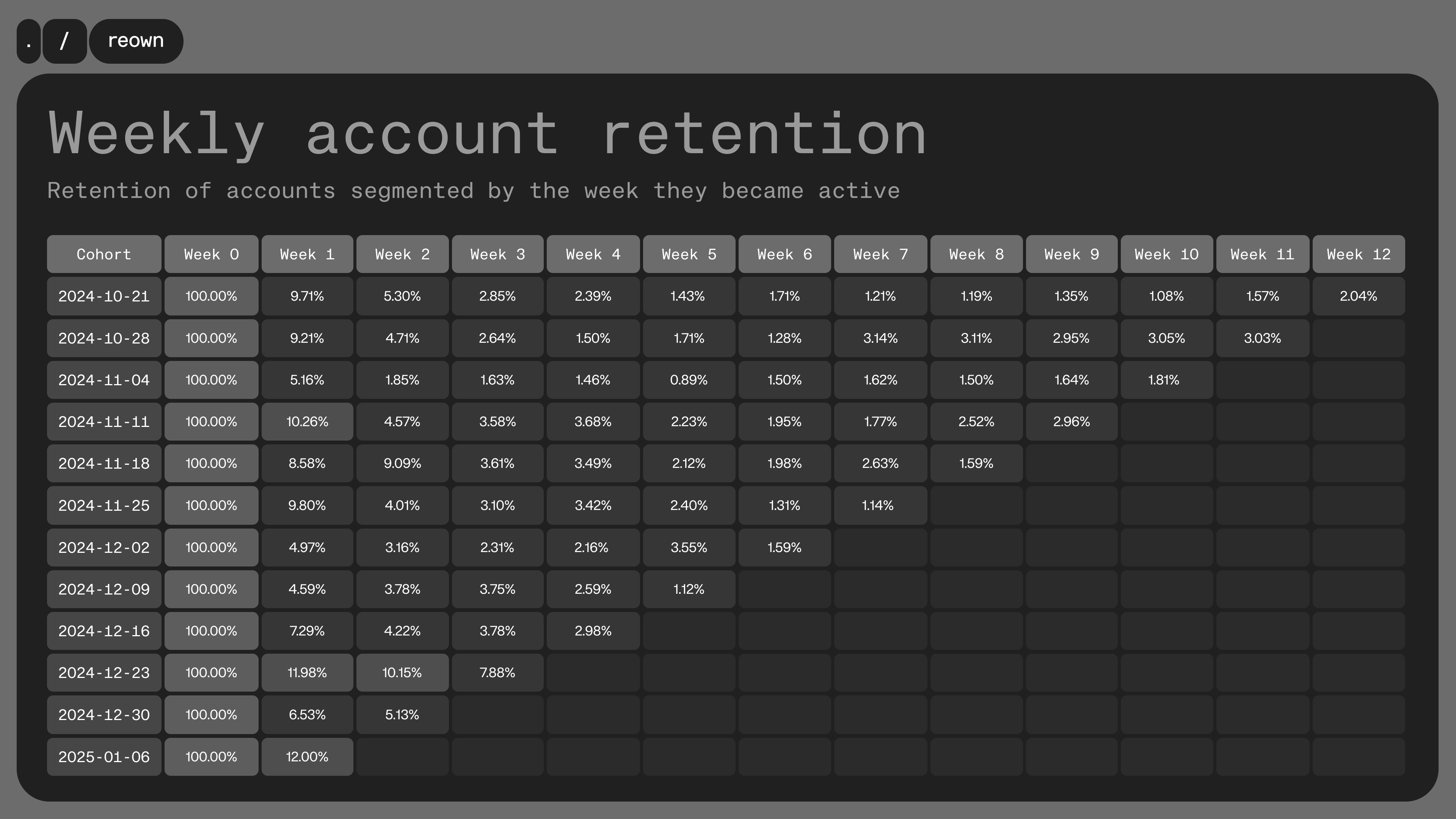
Exhibit 1: The ~23mio ERC-4437 accounts have very low retention rates (source https://www.bundlebear.com/overview/all)
While ERC-4337 represents a critical innovation, adoption has been limited. As of now, approximately 23 million ERC-4337 accounts have been created, primarily as app-specific accounts. However, these accounts have exhibited very low retention rates (source: BundleBear). The lack of widespread adoption underscores the need for further developments to unlock the full potential of Account Abstraction.
The upcoming EIP-7702 standard, scheduled for release as part of the Pectra upgrade in late Q1 or early Q2 2025, is poised to change this. Unlike ERC-4337, EIP-7702 will allow existing accounts to benefit from gas abstraction features, such as sponsored transactions and the ability to pay fees in non-native tokens. This evolution is expected to drive significant user demand for gas abstraction capabilities in wallets, transforming it from a nice-to-have feature into a core requirement by the end of 2025.
Solana’s Approach to Gas Abstraction
Unlike EVM-based networks, Solana has long benefited from a protocol-native feePayer mechanism, which allows decentralized applications to sponsor user transactions directly. This built-in feature has mitigated some of the challenges associated with native gas tokens. Moreover, Solana’s lack of L2 networks means that the need for native gas tokens has historically been less of a pain point compared to the Ethereum ecosystem.
However, Solana’s competitive edge is set to grow even further with the rise of Account Abstraction wallets like Fuze Wallet, which take UX to the next level. These wallets will enable users to transact on Solana without needing to hold any native gas tokens, setting a new standard for blockchain wallets and raising the bar for UX across the industry.
Flavors of Gas Abstraction: What we will see in 2025
In 2025, gas abstraction will take various forms, each designed to enhance the UX by simplifying transaction processes and removing the complexities associated with gas fees. Several distinct “flavors of gas abstraction” are set to dominate the landscape, making blockchain interactions more intuitive and accessible to a wider audience.
1. App-Sponsored Gas
One of the key trends we’ll see is the rise of app-sponsored gas, where applications take on the responsibility of covering gas fees for their users. The EVM EIP-5792 wallet_sendCalls standard, which allows apps to sponsor gas fees, is already gaining traction. As more wallets and accounts adopt this standard, we can expect a wave of applications offering to sponsor transaction fees for their users.
Reown’s Gas Sponsorship is a great example of this innovation. It enables apps to specify and enforce their gas sponsorship policies, giving developers full control over how they manage gas costs. This solution is designed to reduce friction for users and encourage broader adoption of decentralized applications.
2. Wallet-Sponsored Gas
Wallet-sponsored gas is already a reality, with platforms like Safe{Wallet} sponsoring up to 5 transactions per user per day on L2 networks. This feature removes the need for users to hold or manage native gas tokens themselves. Moving forward, we at Reown anticipate more wallets adopting similar strategies or introducing subscription models to cover gas fees. For instance, users could pay a monthly fee for unlimited or subsidized transaction fees, significantly lowering the barrier to entry for Web3 users.
“Users love our wallet-sponsored payments and we see this being used in over 90% of transactions on enabled L2 networks," says Lukas Schor, Co-Founder at Safe.
3. Non-Native Token Payments
The ability to pay for gas fees using non-native tokens, such as USDC, is already live in several ERC-4337 wallets. Notable examples include the Reown AppKit Embedded Wallet and Trust Swift wallet, both of which allow users to pay gas fees in tokens like USDC instead of being tied to the native gas token of a given network. This flexibility is a huge step forward in improving user experience, as it simplifies the process and allows users to interact with decentralized applications without worrying about holding a variety of native tokens for different networks.
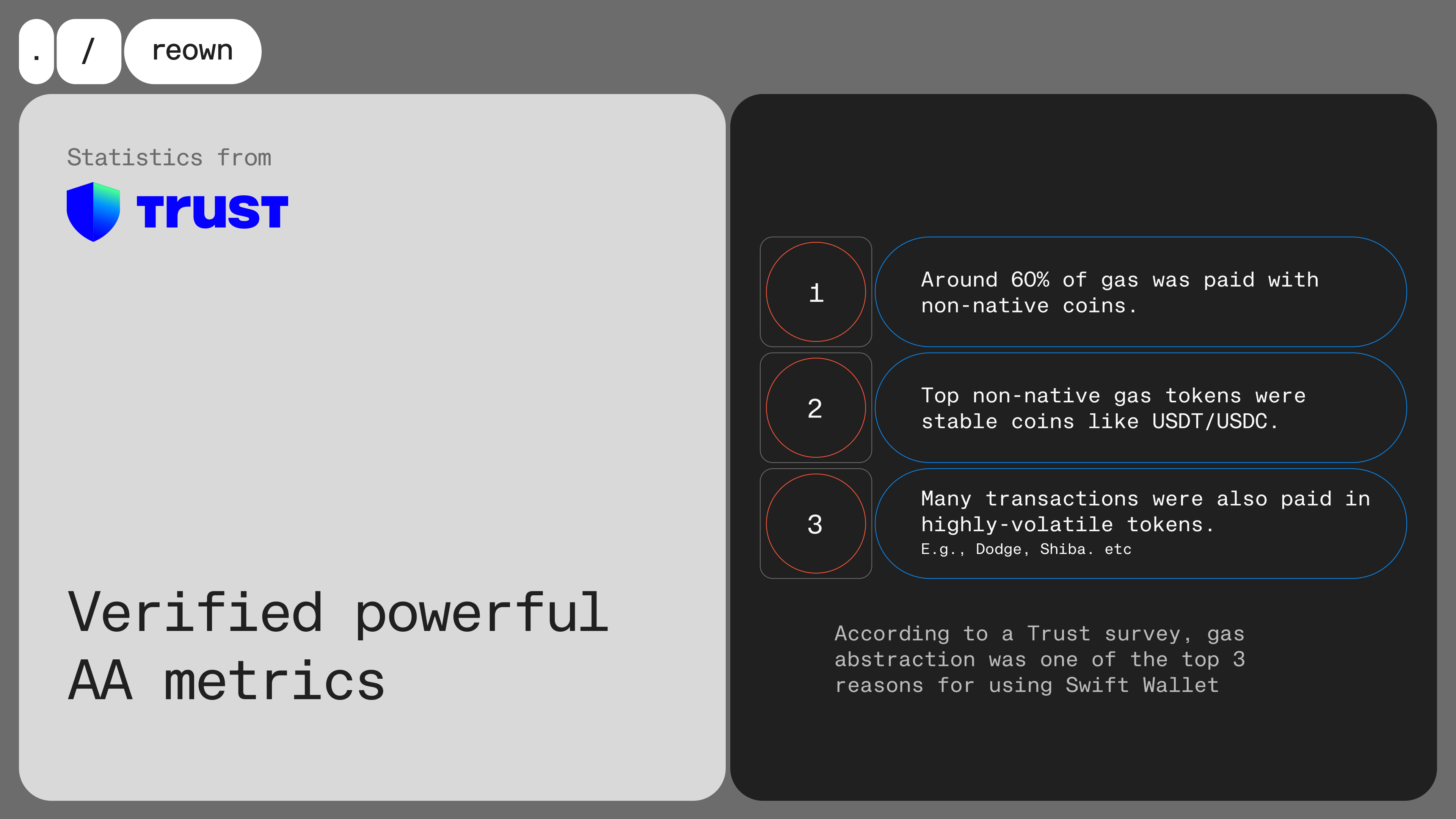
“Our data have verified that Gas Abstraction was a strong incentive to use AA. We have seen that over 60% of transactions in Trust Swift were paid with non-native tokens in some months,” says David Kim, Trust’s AA Wallet Team Lead.
How Reown is leading the charge in Gas Abstraction
At Reown, we are deeply involved in shaping the future of gas abstraction, providing tools and solutions for both apps and wallets to seamlessly integrate these features into their ecosystems.
For Apps:
Reown is a co-author of the ERC-5792 wallet_sendCalls standard, which allows EVM apps to sponsor gas fees and batch transactions for a smoother user experience. In addition, Reown offers a “Wallet Service” to help apps track and manage the status of transactions, which has become more complicated with the introduction of UserOps, the transaction type required for gas sponsorship.
One of Reown’s flagship products, Paymaster, is designed to help apps easily sponsor gas fees for their users, enhancing adoption and streamlining the transaction process.
For Wallets:
Reown WalletKit is ready to support EIP-7702-enabled wallets, empowering apps to offer batch transactions and app-sponsored transactions via the EIP-5792 wallet_sendCalls standard, a standard that Reown played a pivotal role in shaping.
Gas fees have long been one of the most significant user experience challenges in the web3 space. However, with advancements in gas abstraction, this obstacle will be largely resolved by the end of 2025. Reown is leading this transformation by delivering cutting-edge solutions that enable apps and wallets to adopt gas abstraction effortlessly.
Through our flagship products, AppKit and WalletKit, Reown is simplifying gas fee management while collaborating with the broader web3 community to establish the standards that will define the future of transaction efficiency. This commitment to innovation and standardization ensures a web3 experience that is faster, more affordable, and user-friendly.
Summary
The Ethereum Pectra upgrade marks a turning point for blockchain usability, enabling gasless experiences through innovations like EIP-7702. This shift will drastically elevate UX, as a frictionless, gasless user experience becomes the new standard. Apps and wallets will need to adapt quickly to meet the heightened demands.
Reown’s AppKit and WalletKit SDKs, are purpose-built to help apps and wallets implement gasless experiences effortlessly. Whether it's app-sponsored gas, wallet-subsidized transactions, or non-native token payments, Reown’s solutions allow developers to deliver next-generation user experiences with speed and simplicity. As the web3 landscape evolves, Reown ensures that you are well-equipped to stay ahead.
